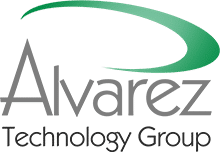Cybercriminals Target LinkedIn: Here’s How You Can Safeguard Your Profile
LinkedIn, the professional social media platform lauded by individuals and businesses alike, has often been perceived as a haven, distanced from the mishaps and cyber-attacks that platforms like Facebook and Twitter frequently encounter. Unfortunately, this confidence might be misplaced. Cybercriminals are now pivoting to LinkedIn, exploiting its unique position as a professional network. But why?
Just think about it: LinkedIn isn’t merely a place to connect with old schoolmates or share your holiday photos. It’s where CEOs, influential thinkers, entrepreneurs, and professionals from every sector converge. It’s a database of resumes, accomplishments, business relations, and more. And for cybercriminals, that’s a goldmine.
Social Engineering and Phishing: The New Norm on LinkedIn
Before delving into how you can shield yourself, it’s pivotal to understand the ‘what’ and ‘why’. Cybercriminals on LinkedIn are predominantly deploying social engineering and phishing attacks. When you think of your LinkedIn account, it’s not just about your data. It’s also a gateway to your colleagues, friends, and professional acquaintances. If a hacker can impersonate you, imagine the trust they leverage. They can spread malware, or worse, phish your contacts, misleading them into traps they’d unknowingly walk into, thinking it’s a professional opportunity.

Activate Two-Factor Authentication: Your Immediate Next Step
If you’ve been relegating activating two-factor authentication (2FA) thinking it’s too cumbersome, now’s the time to rethink. Navigating to the security settings on LinkedIn, you’ll find the option to turn on 2FA. This isn’t a mere recommendation anymore—it’s a necessity. While SMS text messages were previously a standard method for 2FA, it’s far more secure to employ an app such as Google Authenticator. In the evolving landscape of cyber threats, always opt for the more secure alternative.
Steering Clear of Cyber Threats: Account Security Best Practices
The world of cyber threats can seem overwhelming. But, by following a comprehensive set of best practices, you can considerably reduce your vulnerability:
- Adopt a Strong Password: This is foundational. Your password shouldn’t just be a birthdate or your pet’s name. It should blend letters (both upper and lowercase), numbers, and special characters. Strive for a minimum of 8 characters. And remember, your name, phone number, and email address have no place in your password.
- Uniqueness is Key: Ensure each account you operate, whether social media or online banking, has a distinct password. This way, even if one gets compromised, others remain secure.
- Safekeeping of Passwords: Writing down passwords or saving them in digital notes is tempting. Instead, consider utilizing a password manager. This not only aids in remembering passwords but also ensures they remain private and inaccessible to prying eyes.
- Embrace Two-Step Verification: Beyond 2FA, enable two-step verification for an added safeguard on LinkedIn.
- Be Discerning with Connections: As the adage goes, it’s about quality, not quantity. Only connect with individuals you recognize and trust.
- Email Account Security: The email linked with your LinkedIn is a backdoor. Ensure you have multi-factor authentication, akin to two-step verification, activated for it.
- Vigilance is the Best Defense: Report it if something seems off—a message, an endorsement, a connection request. Trust your instincts.
- Updated Antivirus Software: This might sound rudimentary, but ensuring your antivirus software is the latest version fortifies your first line of defense.
In Conclusion
The digital world is replete with opportunities, but it also comes with its fair share of threats. LinkedIn, like any other platform, is not immune. But with awareness, diligence, and proactive measures, you can ensure that your professional profile remains professional and secure.





